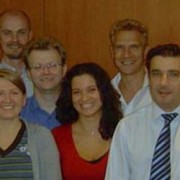Balancing Skills in the Workplace
Balancing Skills in the Workplace
Imagine if you will, it is the middle 1980’s and I am working with a John Deere dealer and we are looking at their Service Department. We were reviewing processes and systems and methods and work flows. We also determined that there was a need to review the skills of the technicians and all support functions in the department.
In those days we didn’t have much in the way of personnel management practices in the Industry. We didn’t have a way of balancing skills in the workplace. We had to build the complete structure and reporting criteria. We created three data files; current employee personnel and payroll information, the skills required to each of the job functions, and the determination of the actual skills of each of the employees. To determine the skills of each employee we created what I called a “Skill Set Inventory.” This inventory consisted of questions with multiple choice answers that the employees they completed and submitted the forms to me.
Then we catalogued the answers and grade ranked all of the employees – we matched these results with the payroll records. The final step was to sit with the management of the department to discuss the skills of each of the employees, without the benefit of the employee’s personal thinking, and grade rank them – again we matched these results with the payroll records.
How do you think the management compared with the employee scores and the payroll records? It was very revealing. The management was embarrassed. There was some matching of the results but very little. It turns out that the management had favorites and seniority had an outsized influence on the results. They had not learned the art of balancing skills in the workplace.
This was an extremely important exercise for me. I conducted these types of reviews with several dozen dealers across many different manufacturer dealers. The results were the same. That took us to the place where we needed to develop an objective assessment tool for dealers.
There are many companies within our Industry who have created assessments, we are not alone in this arena. There are manufacturers, personnel companies, associations and others involved, which cover many aspects of the individual jobs; however, you need to be the judge of the value of the results from any job assessment. You need to do your own due diligence.
Our assessments relate to the specific jobs, for instance, the counter and telephone sales employees, or the service office employees, or the product support sales person. There are six job functions within the parts department, eight in the service department and four in the product support selling and parts and service marketing groups. Let’s review how our assessments were created for a moment. For each class we have conducted for the past thirty years, and the more than ten thousand employees we have had in our classes or webinars, we have had questions and work groups, and evaluations throughout. From our classrooms and webinars, we created our subject specific classes, and in each of these subject specific classes which we called “Learning On Demand (LOD)” products we had assessments and tests. This is the foundation of our Skills Assessments programs. We selected for each job function assessment, from the pool of over one thousand questions, the job function assessment questions. Then we have had more than thirty-five hundred people take these assessments so that we could put the job function assessments into the marketplace with confidence.
I am excited by the assessment programs. We have received more than thirty registrations today and I am expecting more than two hundred this week. The same again next week. The market seems to be rewarding us with their orders. We thank them and will continue to provide leading edge tools for dealers to improve their processes, procedures, systems and methods. We aim to assist each employee working in this Industry with products that will help them realize their potential.
We believe that is our mission and our life’s work.
The time is now.



